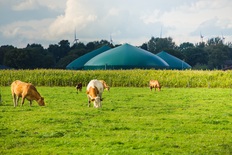- Cepsa aims to manage 4 TWh of biomethane per year by 2030.
- The partnership with Kira Ventures will develop up to 15 biomethane plants in Spain.
- The first five plants will be operational between 2025 and 2026.
- Biomethane can reduce CO2 emissions by up to 100% and is compatible with existing gas networks.

Project Overview
Cepsa has partnered with Kira Ventures to develop up to 15 biomethane plants in Spain by 2030. These plants will convert agricultural and livestock waste into biomethane, a renewable gas that can replace natural gas in industrial processes.
Key Figures and Targets
By 2030, Cepsa aims to manage 4 TWh of biomethane annually, significantly reducing CO2 emissions by 728,000 tons per year. This is equivalent to planting 8.7 million trees. The first five plants, located in Castilla-La Mancha and Castilla y León, are expected to be operational between 2025 and 2026.
Environmental Impact
The use of biomethane will promote the circular economy by reusing 10 million tons of waste per year. It will also contribute to the production of green hydrogen and sustainable mobility, aligning with the REPowerEU initiative to reduce fossil fuel dependence and CO2 emissions.
Technological and Economic Benefits
Biomethane has the same characteristics as natural gas, allowing it to be stored or injected into existing gas networks without new infrastructure. The production process involves anaerobic digestion of organic waste, followed by upgrading to purify the biogas into biomethane. This technology supports rural economic development by boosting agriculture and livestock sectors.

